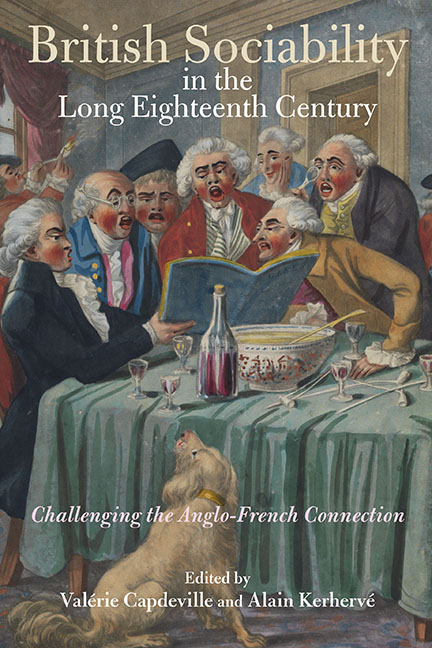Book contents
- Frontmatter
- Contents
- List of illustrations
- List of contributors
- Foreword
- Acknowledgements
- Introduction
- Part 1 Emergence of new political and social practices
- 1 ‘Restoration’ England and the history of sociability
- 2 Mapping sociability on Restoration townscapes
- 3 Club sociability and the emergence of new ‘sociable’ practices
- 4 The tea-table, women and gossip in early eighteenth-century Britain
- Part 2 Competing models of sociability
- Part 3 Paradoxes of British sociability
- Conclusion
- Bibliography
- Index
1 - ‘Restoration’ England and the history of sociability
from Part 1 - Emergence of new political and social practices
Published online by Cambridge University Press: 18 September 2019
- Frontmatter
- Contents
- List of illustrations
- List of contributors
- Foreword
- Acknowledgements
- Introduction
- Part 1 Emergence of new political and social practices
- 1 ‘Restoration’ England and the history of sociability
- 2 Mapping sociability on Restoration townscapes
- 3 Club sociability and the emergence of new ‘sociable’ practices
- 4 The tea-table, women and gossip in early eighteenth-century Britain
- Part 2 Competing models of sociability
- Part 3 Paradoxes of British sociability
- Conclusion
- Bibliography
- Index
Summary
THE RESTORATION has always held a somewhat awkward place in the broader narrative of English history. On the one hand, it has been seen as the endpoint to a turbulent Stuart century riven by civil wars and revolutionary regime changes. William of Orange's invasion by invitation and the Glorious Revolution that gave him the crowns to England, Scotland and Ireland is remarkable, in this perspective, only because the constitutional settlement which it provoked happened to endure for much longer than that of the previous Stuart regimes. Because of the significance accorded here to the Glorious Revolution, this perspective has mainly been adopted by political historians, particularly those with Whiggish sympathies. Its most famous articulation may be found in Thomas Babington Macaulay's History of England from the Accession of James II (1848), but it remains alive and well in the work of contemporary historians such as Steven Pincus and Tim Harris.
On the other hand, the Restoration era is sometimes understood not as the ending but, rather, as the beginning of a new era: the soi disant ‘long eighteenth century’. Here, the Restoration era inaugurates the construction of a distinctly English old regime, one which managed to survive the age of the French revolution and persisted until at least the passing of the First Reform Act of 1832, and perhaps even longer than that. While the most vociferous promulgator of this argument for a long eighteenth-century English old regime has been Jonathan Clark, for whom the pillars of eighteenth-century society were the monarchy, the established church and the aristocracy, he has found unlikely fellow travellers amongst a host of cultural and social historians who may disagree with Clark's argument for Anglican monarcho-aristocratic hegemony but who nevertheless see lines of continuity from the restoration of the Stuarts in 1660 until at least the long reign of George III. Historians such as Clark and Roy Porter disagreed deeply about the nature of English society in the long eighteenth century, but they agreed that the period began not in 1700, or even 1688–89, but decades earlier, with the Restoration in 1660.
- Type
- Chapter
- Information
- British Sociability in the Long Eighteenth CenturyChallenging the Anglo-French Connection, pp. 7 - 24Publisher: Boydell & BrewerPrint publication year: 2019



